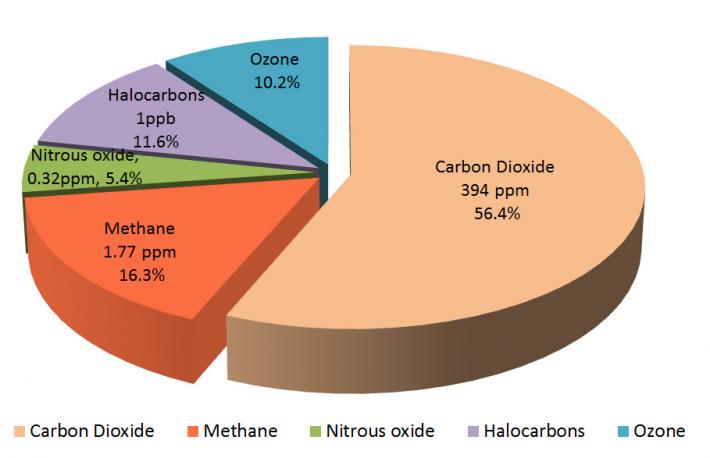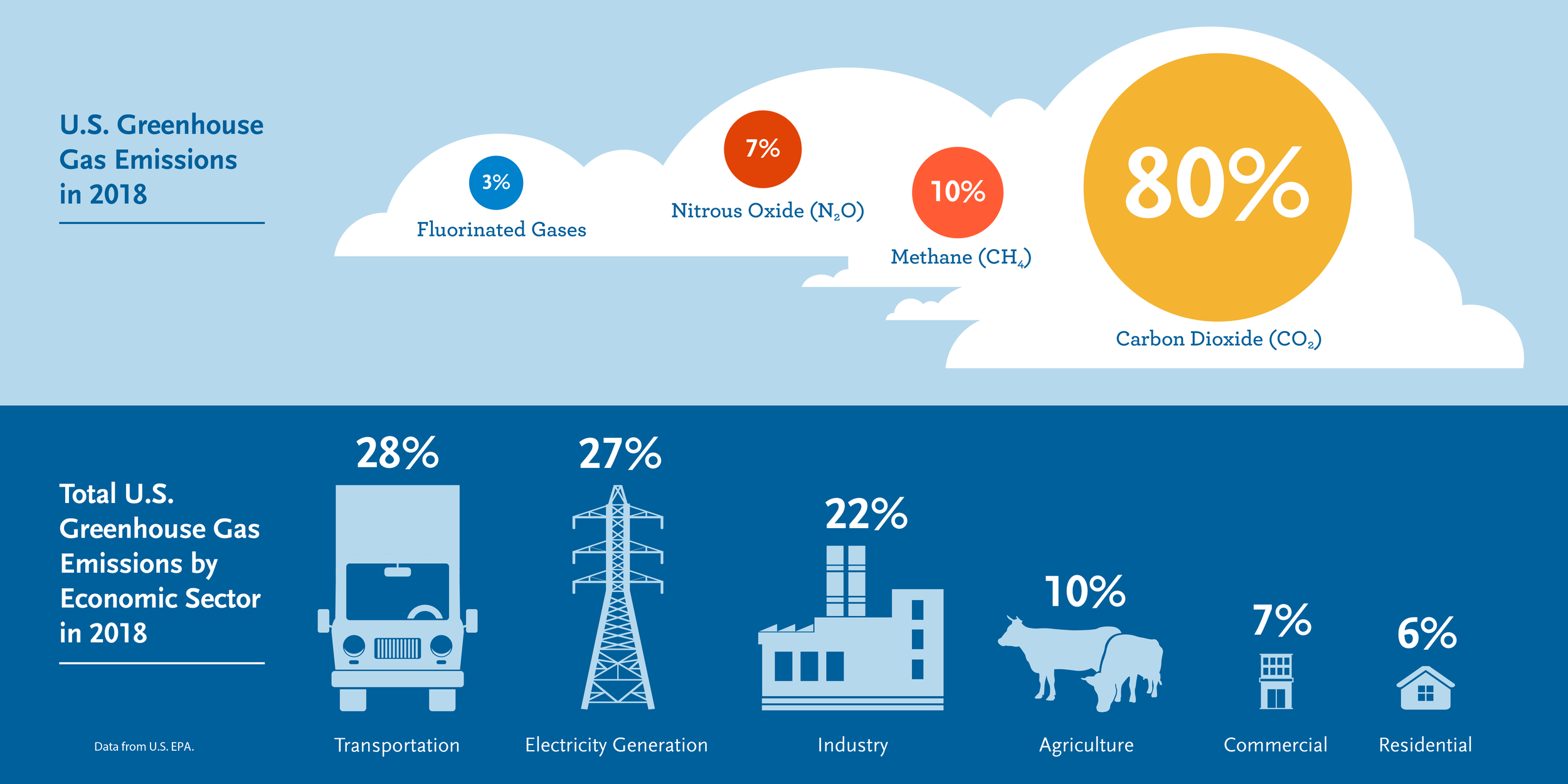Table Of Content

The report, called the California Green Innovation Index, provides an annual snapshot of the state’s decarbonization efforts. Nichols said researchers had become frustrated as state officials have taken longer to release emissions data. The CARB Regulation for the Mandatory Reporting of GHG Emissions (MRR) is a primary data source for the statewide inventory but emissions are categorized differently in the two programs. Industrial cogeneration (also known as Combined Heat and Power, or CHP) represents the major categorization difference. The guidance document below provides instruction for working with and crosswalking between the two datasets. A spreadsheet provides GHG inventory industrial cogeneration emissions disaggregation to facilitate comparison with MRR data.
Cumulatively: Which countries have historically emitted the most greenhouse gases?
Carbon dioxide is constantly being exchanged among the atmosphere, ocean, and land surface as it is both produced and absorbed by many microorganisms, plants, and animals. Emissions and removals of CO2 by these natural processes, however, tend to balance over time, absent anthropogenic impacts. Since the Industrial Revolution began around 1750, human activities have contributed substantially to climate change by adding CO2 and other heat-trapping gases to the atmosphere. This episode took place roughly 55 million years ago, and the rise in CH4 appears to have been related to a massive volcanic eruption that interacted with methane-containing flood deposits.
Climate Change Indicators: U.S. Greenhouse Gas Emissions US EPA - U.S. EPA.gov
Climate Change Indicators: U.S. Greenhouse Gas Emissions US EPA.
Posted: Wed, 13 Dec 2023 08:00:00 GMT [source]
Greenhouse gas emissions
The last time global atmospheric CO2 amounts were this high was 3 million years ago, when temperatures were up to 5.4 degrees F (3 degrees C) higher than during the pre-industrial era. As a result of modern-day CO2-induced global warming, 2016 was the warmest year on record, with 2019 and 2020 ranking as the next warmest, respectively. In fact, the six hottest years on record have all occurred since 2015, according to the World Meteorological Organization. Forestry and other land-use practices can offset some of these greenhouse gas emissions.
Apple ramps up investment in clean energy and water around the world
Carbon dioxide, a key greenhouse gas that drives global climate change, continues to rise every month. Overall, fluorinated gas emissions in the United States have increased by 105% between 1990 and 2022. This increase has been driven by a 349% increase in emissions of hydrofluorocarbons (HFCs) since 1990, as they have been widely used as a substitute for ozone-depleting substances. Emissions of perfluorocarbons (PFCs) and sulfur hexafluoride (SF6) have declined during this time due to emission-reduction efforts in the aluminum production industry (PFCs) and the electrical transmission and distribution industry (SF6). And the projected climate and public health benefits far outweigh costs, the EPA says.
If we can cut our emissions in half this decade and reach net-zero emissions by mid-century, we still have a chance to avoid the most catastrophic impacts of climate change. When trees are felled to produce goods or heat, they release the carbon that is normally stored for photosynthesis. This process releases up to 4.8 billion metric tons of carbon into the atmosphere every year, according to the World Resources Institute.
Transportation Sector Emissions
This figure shows the monthly mean carbon dioxide measurements at the Mauna Loa Observatory in Hawaii since 1958. The red line shows the monthly mean while the black line shows the same after correcting for the average seasonal cycle. The small up and down saw-tooth pattern reflects seasonal changes in the release and uptake of carbon dioxide by plants. Two characteristics of atmospheric gases determine the strength of their greenhouse effect. During the 20,000-year period before the Industrial Revolution, atmospheric CO2 fluctuated between about 180 parts per million (ppm) during ice ages and 280 ppm during interglacial warm periods. However, since the beginning of the Industrial Revolution in the 1750s, the amount of CO2 has risen nearly 50%, according to NASA’s Global Climate Change portal.
This distinction arises because the amount of water vapour in the atmosphere cannot, in general, be directly modified by human behaviour but is instead set by air temperatures. The warmer the surface, the greater the evaporation rate of water from the surface. As a result, increased evaporation leads to a greater concentration of water vapour in the lower atmosphere capable of absorbing infrared radiation and emitting it back to the surface.

Some researchers have developed new methods that aim to provide a closer representation of the actual temperature response to different gases. Myles Allen, Michelle Cain, and colleagues at the University of Oxford’s Martin School lead a research program on climate pollutants, which looks directly at this challenge. Total annual emissions allow us to see the world's largest emitters in absolute terms.
Since 1990, gross U.S. greenhouse gas emissions have decreased by just over 3%. From year to year, emissions can rise and fall due to changes in the economy, the price of fuel, and other factors. In 2022, U.S. greenhouse gas emissions increased 0.2% compared to 2021 levels. In 2020, there was a sharp decline in emissions largely due to the impacts of the coronavirus (COVID-19) pandemic on travel and other economic activity.
For a more comprehensive list, see Chapter 7 of the Contribution of Working Group III to the Sixth Assessment Report of the Intergovernmental Panel on Climate Change. Greenhouse effect, a warming of Earth’s surface and troposphere (the lowest layer of the atmosphere) caused by the presence of water vapour, carbon dioxide, methane, and certain other gases in the air. Of those gases, known as greenhouse gases, water vapour has the largest effect. Today, climate change is the term scientists use to describe the complex shifts, driven by greenhouse gas concentrations, that are now affecting our planet’s weather and climate systems.
But when that same energy leaves the Earth, it does so as infrared radiation, which we experience as heat. Greenhouse gases reflect infrared radiation, so some of the heat leaving the Earth bounces off the greenhouse gases in our atmosphere and comes back to the Earth’s surface. This is called the “greenhouse effect,” in a comparison to the heat-trapping glass on a greenhouse. In 2014 the Obama administration proposed its "Clean Power Plan" aimed at cutting carbon dioxide emissions from power plants 32%, from 2005 levels, by 2030. Still the country met that goal well before 2030, as coal-fired power plants were replaced by natural gas plants that emit less climate pollution.
Fluorinated gases include chlorofluorocarbons (CFCs), hydrochlorofluorocarbons (HCFCs), and hydrofluorocarbons (HFCs). They are produced during the manufacturing of refrigeration and cooling products and through aerosols. The world technically has only one-fifth of its "carbon budget"—the total is 2.8 trillion metric tons—remaining in order to avoid warming the Earth more than 1.5 degrees Celsius.
Methane is about 21 times more efficient at absorbing radiation than CO2, giving it a higher GWP rating, even though it stays in the atmosphere for only about 12 years, according to the United Nations Framework Convention on Climate Change (UNFCCC). Although methane and other GHGs are capable of trapping more heat than CO2, scientists still consider carbon dioxide to be the dominant greenhouse gas because its warming effect outlives the others' effects by centuries. In 2022, the net CO2 removed from the atmosphere from the LULUCF sector was 13% of total U.S. greenhouse gas emissions. Between 1990 and 2022, total carbon sequestration in the LULUCF sector decreased by 11%, primarily due to a decrease in the rate of net carbon accumulation in forests, as well as an increase in CO2 emissions from urbanization.
Carbon dioxide (CO2), methane and nitrous oxide are the major GHGs to worry about. CO2 stays in the atmosphere for up to 1,000 years, methane for around a decade, and nitrous oxide for approximately 120 years. The surface of the Earth absorbs just under half of the sun’s energy, while the atmosphere absorbs 23 per cent, and the rest is reflected back into space. Natural processes ensure that the amount of incoming and outgoing energy is equal, keeping the planet’s temperature stable.
Territories, while the coal decrease in primarily in the electric power sector. Although the greenhouse effect is a naturally occurring phenomenon, it is possible that the effect could be intensified by the emission of greenhouse gases into the atmosphere as the result of human activity. From the beginning of the Industrial Revolution through the end of the 20th century, the amount of carbon dioxide in the atmosphere increased by roughly 30 percent and the amount of methane more than doubled. This global warming could alter Earth’s climates and thereby produce new patterns and extremes of drought and rainfall and possibly disrupt food production in certain regions. Some, such as tectonic activities, operate at timescales of millions of years, whereas others, such as vegetation, soil, wetland, and ocean sources and sinks, operate at timescales of hundreds to thousands of years.
Human activities—especially fossil-fuel combustion since the Industrial Revolution—are responsible for steady increases in atmospheric concentrations of various greenhouse gases, especially carbon dioxide, methane, ozone, and chlorofluorocarbons (CFCs). Some, such as tectonic activities, operate at timescales of millions of years, whereas others, such as vegetation, soil, wetland, and ocean sources and sinks, operate at timescales of hundreds to thousands of years. Human activities—especially fossil-fuel combustion since the Industrial Revolution—are responsible for steady increases in atmospheric concentrations of various greenhouse gases, especially carbon dioxide, methane, ozone, and chlorofluorocarbons (CFCs).

No comments:
Post a Comment